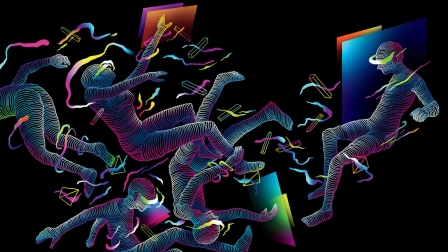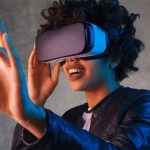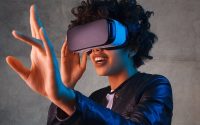The Biggest Issue With Rift, Vive, and Hololens
Last summer, Pokémon Go instantly transformed augmented reality from a geeky-cool niche concept into a mainstream phenomenon. But if you really want to experience AR’s world-changing potential, you can’t just download an app and start chasing after Charizards. Serious augmented reality—and its cousin, virtual reality—finally arrived this year in the form of several impressive products that could mark a big evolution in how we connect to the digital world.
Microsoft’s AR device, HoloLens, started shipping in March (it’s currently available as a $3,000 developer kit; the company says a cheaper consumer version is in the works). The headset, which vaguely resembles ski goggles, layers 3D digital imagery on top of your regular field of vision, creating a seamless blend of the real world and computer-generated content. Meanwhile, Facebook’s Oculus Rift and HTC’s Vive—also released in early 2016—offer fully immersive experiences that place you inside stunningly convincing virtual worlds. At $599 and $799 apiece, the strap-to-your-face screens are as pricey as they are exciting. “We’ve all used mice and keyboards and touch screens, but AR and VR represent a new way of interacting with information and digital services,” says Lewis Ward, an analyst at IDC. “We’re not sure what we’re going to find yet in this new UI paradigm, but it could turn out to be as disruptive as touch screens have been in the past decade.”
Each of the three devices is a technical feat. Invented by a teenager in his Long Beach, California, garage, the Rift solves problems that had bedeviled engineers and designers for decades, such as motion sickness–inducing interfaces and bulky, uncomfortable hardware that prevented extended use. The Vive’s biggest achievement is its pair of headset-linked handheld controllers, which are easy and intuitive to use, making the experience exponentially more engaging. And HoloLens nails the dizzyingly complex challenge of stuffing a 3D projector and room-mapping camera into a lightweight, wearable device that doesn’t need to be tethered to a separate computer.
As tantalizing as these platforms are, there are still some significant barriers to widespread adoption. The Vive and Rift need to be hooked up to powerful, expensive computers in order to work, pushing their true cost into the thousands of dollars. And HoloLens currently suffers from limited processing power and a relatively small field of vision. To put it another way, none of these products is likely to be the iPhone—a breakthrough technology that immediately and radically remakes the landscape. Instead, they seem more akin to Steve Jobs’s original Macintosh computer. When it arrived in 1984, the Mac failed to catch on in the broader market. But its many widely imitated features—most notably its mouse and transformative graphical interface—went on to define personal computing for decades.
Even if the HoloLens, Rift, and Vive don’t themselves grow into the kind of mass-appeal gadgets that inspire mainstream acceptance, the breakthrough solutions they offer could lead to generations of ever-more-sophisticated VR products. And to be sure, the devices make you gasp with wonder when you use them for the first time; it’s one thing to read about the promise of virtual reality, and quite another to experience how utterly transporting the technology can be. “The demo that got me was Medium for Oculus, which lets you sculpt in 3D,” says designer Rob Girling, whose firm, Artefact, is building developer tools for VR. “It feels like [open-world building game] Minecraft times 1,000, times 10,000. But it still feels like a demo.”
Ultimately, that’s the biggest early issue with AR and VR: The content currently available for these platforms seems intended to showcase the promise of the devices rather than to provide fully realized and satisfying experiences. But more meaningful interactivity is tantalizingly easy to imagine. Augmented reality could one day become a normal part of everyday life, feeding us a constant stream of information about our environment. More immediately, we could start seeing practical applications such as AR how-to manuals that layer instructions on top of tricky projects, making experts of us all. And VR, in addition to potentially transforming the gaming industry, could, for example, let us watch NFL games from the point of view of our favorite team’s starting quarterback. “The killer app has yet to come,” says Jake Barton, a designer whose firm, Local Projects, creates immersive digital experiences. “But what happens when you get the Spielberg of VR?”
Click here for the 2016 Innovation by Design Awards finalists and winners.
A version of this article appeared in the October 2016 issue of Fast Company magazine.
Fast Company , Read Full Story
(14)













